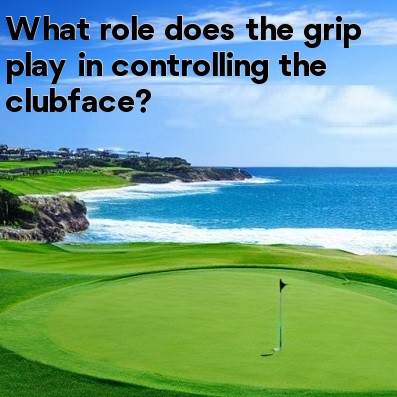
The Role of the Grip in Controlling the Clubface in Golf
When it comes to golf, the grip is one of the most fundamental aspects of the game. A proper grip allows the golfer to have control over the clubface, which ultimately affects the direction and trajectory of the ball.
The Importance of a Neutral Grip
Having a neutral grip is crucial in maintaining control over the clubface. A neutral grip means that the hands are positioned on the club in a way that allows the clubface to be square to the target at impact. This ensures that the clubface is not open or closed, which can lead to inconsistent shots.
The Placement of the Hands
- The lead hand, for a right-handed golfer, is the left hand and should be placed on the club first. The lifeline of the left hand should rest on top of the grip with the thumb pointing down the shaft.
- The trailing hand, the right hand for a right-handed golfer, is placed below the lead hand. The little finger of the trailing hand should interlock with the index finger of the lead hand. Alternatively, some golfers prefer using the overlapping grip, where the little finger of the trailing hand rests on top of the index finger of the lead hand.
Pressure and Tension
While gripping the club, it's important to have a balance of pressure and tension. Gripping the club too tightly can result in restricted wrist movement and a lack of clubhead control. On the other hand, gripping the club too loosely can lead to the club slipping or twisting in the hands during the swing.
The Role of the Fingers
The fingers play a significant role in controlling the clubface. The pad of the lead thumb should be placed on the top of the club grip, allowing for an effective hinge during the swing. The remaining fingers of both hands should wrap around the grip naturally, without gripping too tightly.
The Vardon Grip
The Vardon grip, also known as the overlapping grip, is one of the most widely used grip styles in golf. This grip allows for better control and stability of the clubface. With this grip, the little finger of the trailing hand rests on top of the index finger of the lead hand, creating a connection between the hands that promotes a unified swing.
Correcting the Grip
If you find that your shots are consistently slicing or hooking, it may be a sign that your grip needs adjustment. Working with a golf instructor or coach can help you identify and correct any grip issues that may be affecting your shot accuracy.
Conclusion
The grip is a critical aspect of controlling the clubface in golf. A proper grip allows for better control, leading to more accurate shots. By understanding the importance of a neutral grip, the correct placement of the hands, and the role of the fingers, golfers can enhance their control over the clubface and improve their overall game.





